Zoar Harvest Festival, Ohio History Connection
Tidy little bird’s nests decorate the doorways of buildings in Historic Zoar Village. The birds sense safety, even if many of the former residences, schools and businesses are now viewed by many enthusiastic tourists. The 200 Zoarites who formed the utopian settlement were pacifists and German Separatists who made Tuscarawas County their communal home from 1817 to 1898.
These families did not originally intend to establish a communal society, where all things were shared, including work, shelter and food. But banding together made sense to the struggling Zoarites, who valued moderation, women’s rights, anti-slavery and, for eight years, celibacy. According to local historian and tour guide Craig Stambaugh, Zoarites also prized cleanliness, even scrubbing tree trunks.
Today, the buildings in Zoar Village are owned and managed by the Ohio History Connection, the Zoar Community Association and private residents, including about 75 families.
“It’s one thing to have a historical building. But it’s pretty amazing to have an entire village of historic homes. It’s very genuine here,” says Historic Site Manager Tammi Mackey Shrum, noting that the village is a National Historic Landmark and on the National Register of Historic Places. “Zoar is also one of the longest lasting communal settlements in the United States.”
Zoar Garden, All photos by Casey Rearick, unless otherwise specified.
Hidden History
Life in the village, formed by the Society of Separatists of Zoar, was both idyllic and filled with hard work. Leader and minister Joseph Bimeler is credited for steering his community, once totaling 7,000 acres, into prosperity. Bimeler’s original, modest log cabin still stands and can be viewed from the outside. But to engage more with the environment, look for the beautiful two-and-a-half story red brick and sandstone Number One House, built in 1835 as a home for the elderly. It was given to Bimeler for his personal residence after older members of the village decided they would rather live in their own homes. And now it stands as a museum full of Zoar Village artifacts, including tools, cooking utensils and historic documents.
Zoarites rose early and worked long hours six days a week in specialty fields. Some made metal cups or bread pans in the Tin Shop. Bakery workers added dried hops to dough to help in the rising process and kneaded round loaves of bread to feed the entire village. The blacksmith hand-forged rakes, shovels and nails, while seamstresses created linens and clothing around a long table in The Sewing House (these women often worked with the same one-print-suits-all dress fabric). Shepherds tended sheep, as mutton stew was a frequent meal. Women also toiled in the laundry, a structure with only two walls so clothes could be hung and exposed to the air and sun to dry.
Children age three and over were given chores and lived in boys’ and girls’ dormitories, enabling parents to work all day. Family members mostly interacted only on weekends, but the dormitories were discontinued in 1845.
The beautiful brick Meeting House was built in 1853 with a cupola and bell said to be cast with silver dollars mixed with ore to give it a distinct sound. These days, the building is the Zoar United Church of Christ, welcoming all for service. The Zoar Hotel, built in 1833, was a favorite retreat for President William McKinley and visitors of every social level, and brought more wealth and outsiders to the village. While exterior renovation is now finished, it will still be a while before the interior is complete and ready to be viewed by the public.
“Zoar is still a stage where Ohio’s history is told,” says tour guide Craig Stambaugh, whose wife’s great-grandfather was a member of the communal society.
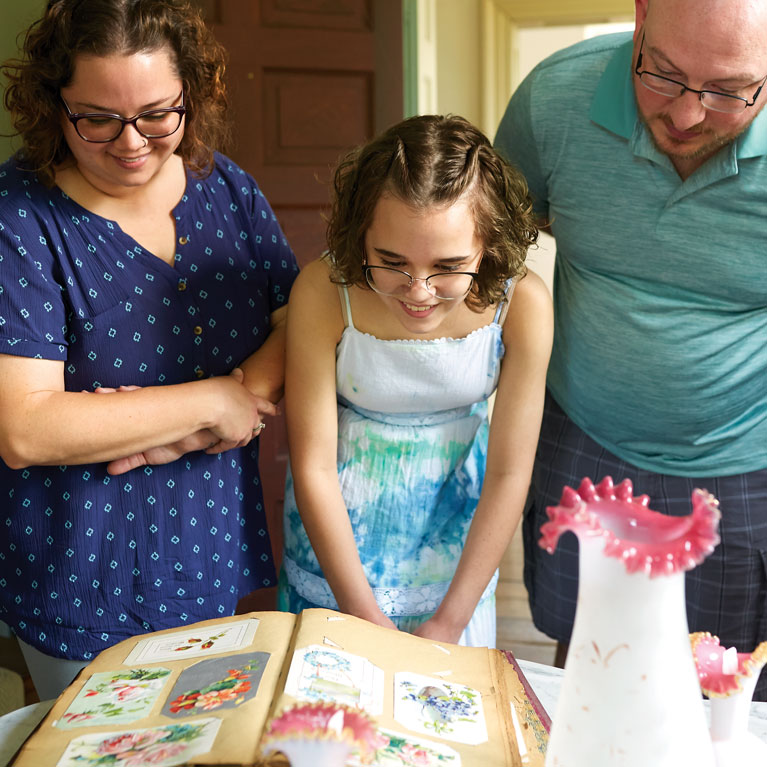

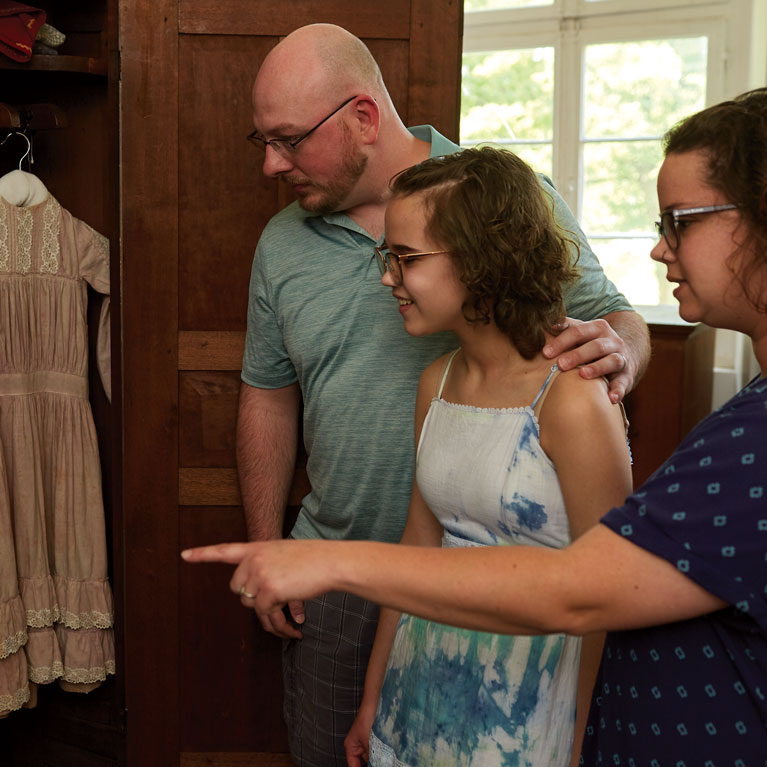
Where the Grass is Greener
Visitors to Zoar today are welcome to explore the mostly walkable village; just follow the red brick sidewalks (and please respect the private residences)! A fan favorite is the fenced Zoar Garden, one of the most serene public gardens in Ohio. It features well-tended flowers, vegetables and trees, including a large spruce tree reflecting the Zoarites' religious beliefs and honoring the garden’s original design. Take a peek at the original Garden House still on-site — it used to be where the Society’s gardener and his family called home. New in 2021, a garden shop has been opened in the home’s two-story attached greenhouse. You can purchase plants and other gift items here, or just explore the space and enjoy the greenery.
Beyond the Zoar Garden, this community has plenty of green spaces. Visitors may walk the tree-lined streets and view beautiful private gardens from the sidewalk. The village is also adjacent to woodlands and park areas, as well as the peaceful rolling hills of the Zoar Levee area. (Construction by the U.S. Army Corps of Engineers begins this summer to eliminate potential flooding in Zoar.)
Can’t get enough greenery? Find more green spaces nearby, including the Ohio & Erie Canal Towpath and the 20-mile Zoar Valley Trail, open to the public and owned by the Camp Tuscazoar Foundation. The Zoar Wetland Arboretum, with 30 acres of shallow marshland and 50 acres of wetlands, is maintained by the Earth Action Partners.
Take a tour of Zoar Village
Zoar Today
Zoar’s communal society was abandoned after the influence of outsiders, a changing American economy and evolving transportation methods tested residents’ devotion and personal plans. When the society ended its formal arrangement, the land, businesses and buildings were distributed to remaining residents. But much of the natural beauty and peaceful atmosphere was not lost and about 45 historic buildings have been saved in Zoar.
Self-guided tours are enjoyable and informative thanks to educational signage. But small-group tours offer the best way to really appreciate the lifestyle and culture of Zoar Village residents, especially since the guides will often wear era-appropriate clothing to help set the scene. Your guide will point out the community’s architectural gems and easy-to-overlook building elements, such as tiny windows at the top of a two-story building that served as entries to a pigeon roost.
Tickets for tours conducted by guides are available at the Zoar Store and Visitor’s Center at 198 Main Street. Since its construction in 1833, the structure has always been a retail space of some kind; today it houses a gift shop with items like beeswax candles, local history books and apple butter. Be sure to stop for blackberry scones, vegetable dill sandwiches, stuffed pepper soup and other made-from-scratch goodies at the Tin Shop Coffee House, located in the center of the village.
“You feel like you jumped back a couple centuries here. It’s really just amazing to walk around and feel the tranquility. Even if you aren’t a history buff, the buildings are beautiful and the garden is spectacular,” says Historic Site Manager Tammi Mackey Shrum.
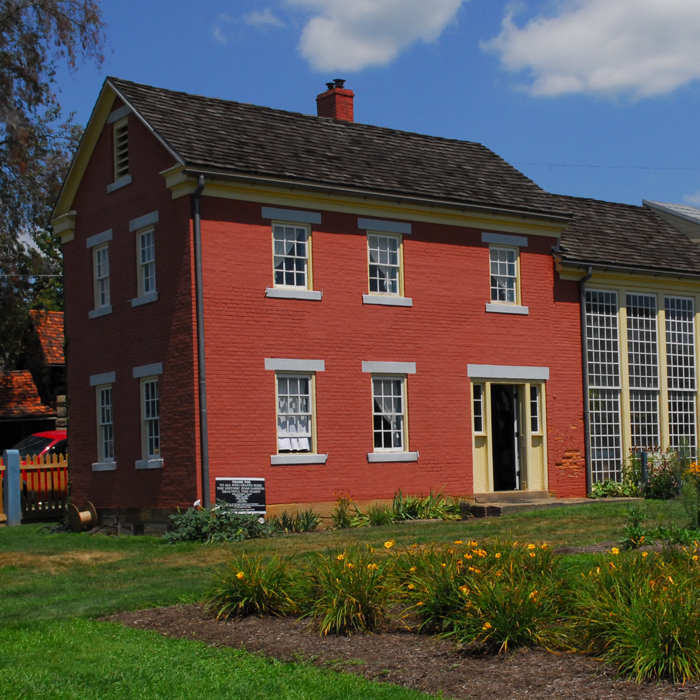

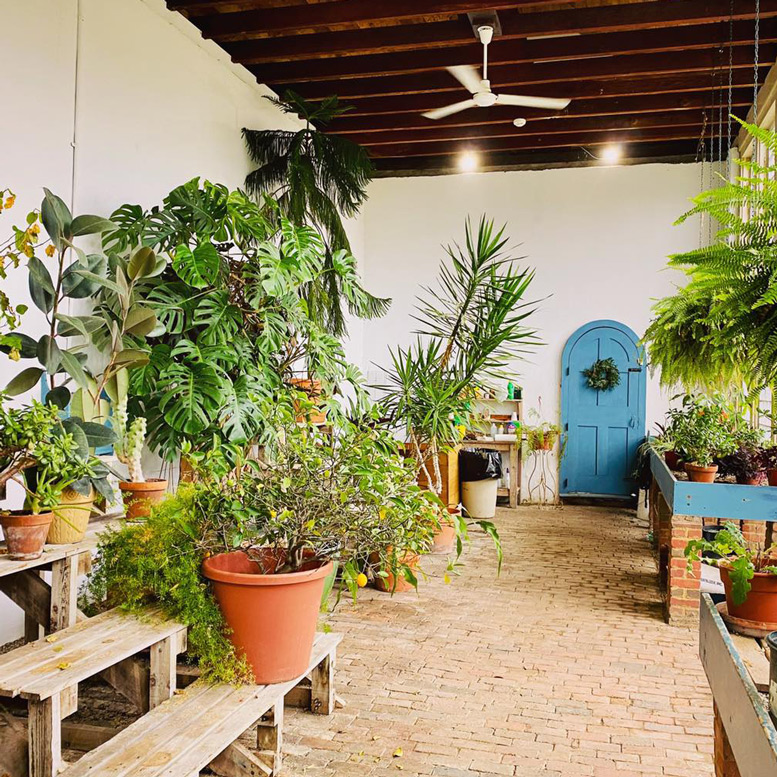


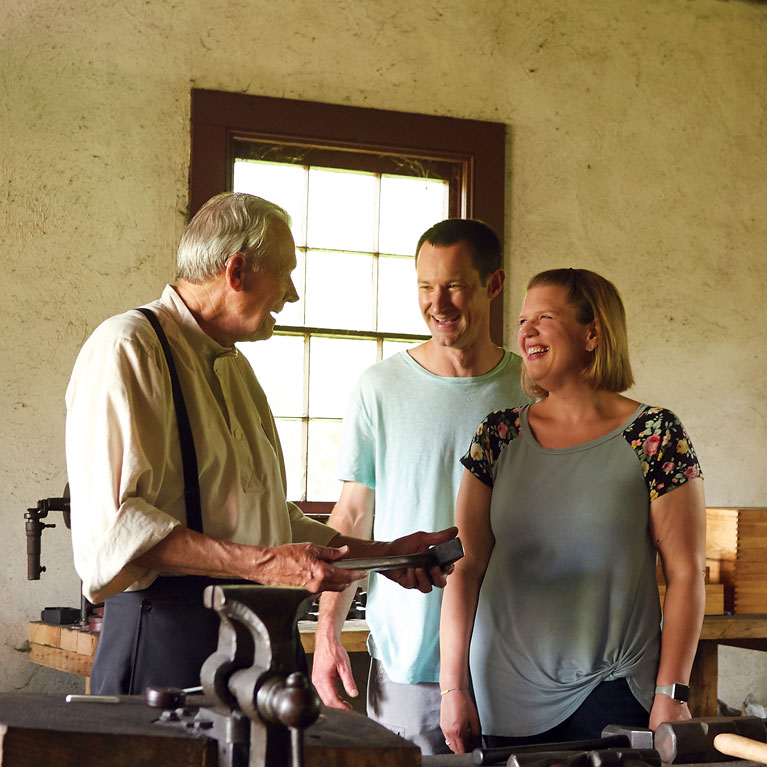
2021 Events
Immerse yourself in the experience by watching a demonstration or taking a class at Zoar Village, including blacksmithing, pretzel making, watercolor painting, weaving and needlework. As of now, Zoar Village is looking forward to hosting several special events in 2021. However, be sure to check the website or call ahead before visiting, as dates are subject to change due to COVID-19 precautions.
- Garden Tour: Artful Blooms, June 19 – tour private gardens and watch local artists' demonstrations
- Zoar Antiques & Artisans Show, July 31 and August 1 – more than 60 antique dealers offering country and primitive antiques, juried craft show
- Civil War Reenactment, September 18 and 19 – more than 700 reenactors and Civil War Ball
- Christmas in Zoar, December 4 and 5 – musical entertainment, horse-drawn carriage rides, and village tours
Zoar Garden
Keep the day’s adventure going by adding a few nearby sites to your itinerary.
Visit nearby Bolivar, Ohio to see the site of Ohio’s only Revolutionary War fort and the Tomb of the Unknown Patriot of the American Revolution.
Go back in time to explore another early settlement located in New Philadelphia, Ohio. This 1722 village includes 16 restored structures and a museum.
East Liverpool preserves its “pottery pride” through historic exhibits and artist showcases.
